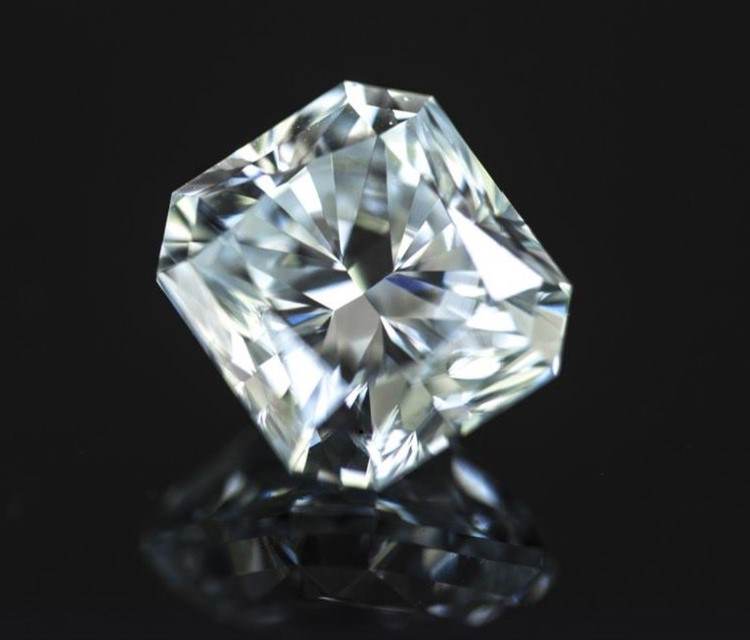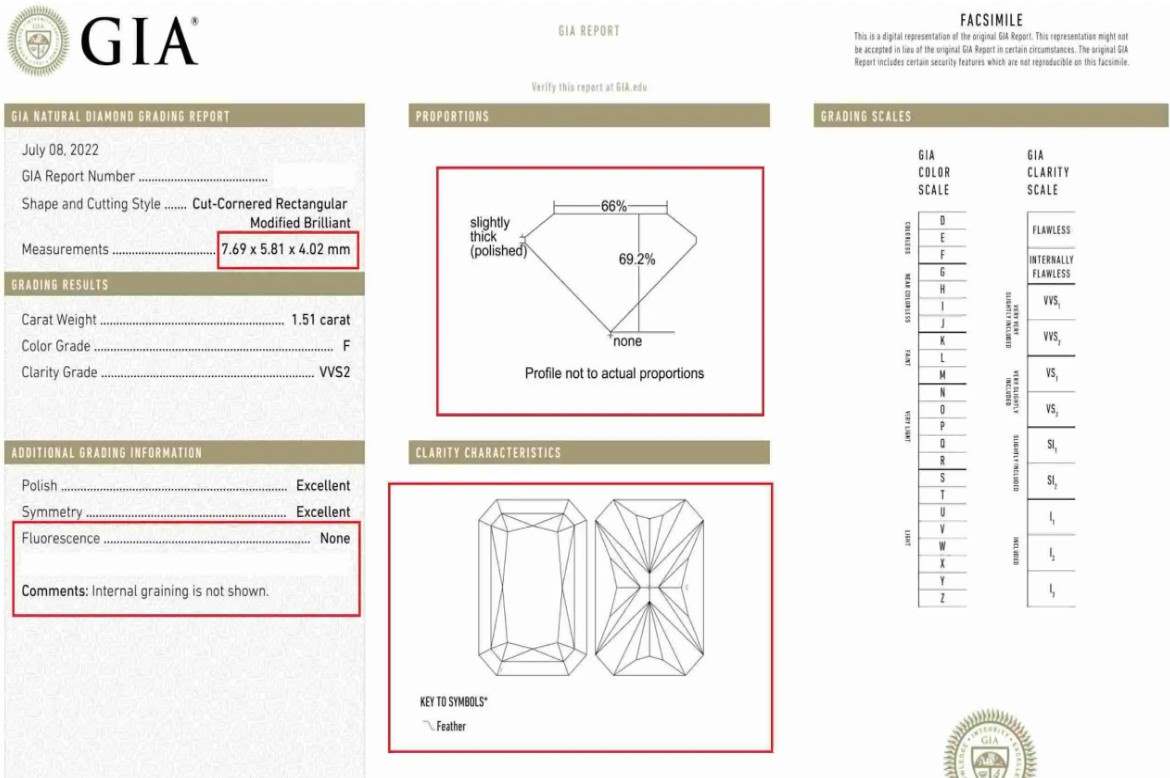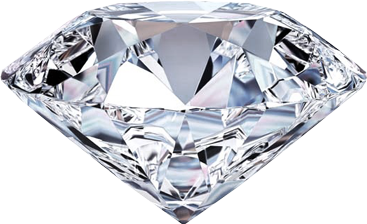Radiant Cut Diamonds: Ideal Ratio and Proportions Guide
Radiant Cut Diamonds: Ideal Ratio and Proportions Guide
Posted by Sharif Khan on 3rd Jun 2022
Radiant Cut Diamonds

Radiant cut diamonds hold a special place among our preferred diamond shapes. With 70 facets, they exude extraordinary radiance and brilliance. The radiant cut presents a dynamic and lively square or rectangular gem, adorned with a comprehensive pattern of brilliant-cut facets on its crown and pavilion.
This cut excels as a remarkable light reflector, rendering it a sought-after choice that rivals the classic emerald cut diamond. The origins of radiant cut diamonds trace back to the 1970s, marked by the innovative mind of Henry Grossbard, to whom credit is due for conceiving this captivating diamond shape.
Search and watch videos of Radiant cut diamonds in super HD with 40X MAGNIFICATION.
Key Points to Know
- Buy a radiant cut diamond with a length-width ratio of 1-1.04 for a square and 1.2-1.3 for an elongated rectangular shape with a depth of 61-67% and a table of 62-70%.
- Make sure the stone has a GIA grading report, and avoid fluorescence in colorless diamonds.
While prioritizing the 4Cs, for a premium-grade radiant cut diamond in the investment-grade range, consider the D-E/VS1+ range (EXAMPLE 1). To maximize both quality and carat weight, consider the F-G/SI1+ range (EXAMPLE 2). To get the biggest stone without overly comprising quality, consider the H-I/SI2+ range (EXAMPLE 3). Finally, compromising on color is one way to maximize the cut, clarity, and carat weight. In such a scenario, consider the K-M/VS2+ range with an ideal cut and even strong blue fluorescence (EXAMPLE 4).

Radiant Cut Diamond Highlights
| Shape | Radiant cut diamonds are among the most popular diamond shapes. They emit incredible fire and brilliance and have 70 facets with a brilliant cut pattern. |
| Cut | While analyzing the cut, look for a 57-69% table and a 58-70% depth. Review the chart below carefully for exact proportions and other critical information related to cut. |
| L/W Ratio | We recommend a length-to-width ratio of 1-1.05 for square and 1.16-1.3 for rectangular, depending on your preference. Make sure you are familiar with square and rectangular radiant cut diamonds. The image below illustrates a range of ratios. |
| Color | While D, E F are colorless grades, G is also an exceptional color grade. H and I are great budget options. |
| Clarity | Flawless to VS1 are considered top clarity grades, and VS2 is also excellent. SI1 is often a great choice for buyers with budget constraints, as it offers a high level of clarity that is eye-clean. However, when considering SI2 diamonds, carefully evaluate them to ensure they are eye-clean. |
| Certification | Buy a radiant cut diamond graded by the GIA or the AGS. Review the section below on how to read a grading report carefully. |
| Settings | Radiant cut diamonds fit nicely into swirl, infinity, and cathedral settings. Classis designs are also a good fit. Here is a list of our top radiant cut engagement rings. |
| Best Places | Here is a list of our top websites for diamond and engagement rings to consider. |
Radiant Cut Proportions
The chart below serves as a general guideline when evaluating the cut of a radiant diamond. The length-to-width ratio of 1.00-1.04 for square shapes and 1.20-1.31 for rectangular shapes is considered classic, though personal preference could override it.
The radiant cut might be best if you appreciate emerald cuts' classic appeal and round diamonds' radiance. It perfectly combines a round diamond's brilliance and an emerald diamond's elegance. Moreover, if a blend of a cushion and a princess cut is desired, explore its cropped corner square alternative, the radiant cut. The smooth transition between the cushion and princess cut gives it a beautiful appearance, especially when set with either round or square corners.
Tools like this 40X MAGNIFIED VIDEO technology can be very helpful in assessing how a change in proportions and length-to-width ratios affects the appearance of a radiant cut diamond. Buyers can better assess each stone by using the outlined proportions below and experimenting with the diamond search filters.
|
Depth %
Poor/Fair: <52 or >80 / 52-80 Good: 57-59 / 71-74.5 Very Good: 58.8-70/67-70.1 Excellent: 61.3-67 |
Table %
Poor/Fair: <50 or >80/50-52.5 or 75.5-80 Good: 53-57/74 Very Good: 58-61/71 Excellent: 62-70 |
|
Culet
Poor/Fair: Large/Very Large Good: Medium Very Good: None/Very Small Excellent: None |
Girdle
Poor/Fair: Ex. Thin – Ex. Thick Good: Very thin - thick Very Good: Very thin - slightly thick Excellent: Very thin - slightly thick |
|
L/W Square Cut
Poor/Fair: >1.09 /1.07-1.09 Good: 1.05-1.06 Very Good: 1.00-1.04 Excellent: 1.00-1.04 |
L/W Rectangular Cut
Poor/Fair: <1.08 or >1.41/1.07-1.08 Good: 1.09-1.13/1.37-1.41 Very Good: 1.14-1.20/1.32-1.36 Excellent: 1.20-1.31 |
Color in Radiant Diamonds
Like evaluating the color in other diamond shapes, the color in a radiant cut diamond is critical. The higher the color grade, the better. In our experience, many buyers prefer warmer colors over colorless options due to the price difference. The warmer colors refer to the near-colorless range of G to I color diamonds in the color spectrum, while the colorless ones refer to D to F color diamonds. The price premium would be much lower if you want to get a lower color grade radiant cut diamond at a lower price.
For more detailed information on the color of radiant cut diamonds, use the table below.
|
<
0.50 Carat
Poor/Fair: >M/ L-M Good: I-K Very Good: G-I Excellent: D-G |
0.51
– 1.0 Carat
Poor/Fair: J-K / >L Good: I Very Good: H Excellent: D-G |
|
1.0
– 2.0 Carat
Poor/Fair: J-K / >I Good: H-I Very Good: G Excellent: D-F |
>2.0
Carat
Poor/Fair: I-K / >I Good: I-H Very Good: F-G Excellent: D-E |
|
Fluorescence
Poor/Fair: Very/Strong Good: Medium Very Good: Faint/None Excellent: None |
|
Clarity in Radiant Cut Diamonds
Picking clarity is a subjective decision when selecting a radiant cut diamond. Opt for one that aligns with your personal standards. Our customers hold diverse criteria for clarity and color: some prefer flawless diamonds, while others find slight inclusions acceptable if they aren't readily apparent. Based on our extensive experience, any clarity grade above SI1 (according to GIA standards) will be considered excellent.
|
< 0.50 Carat
Poor/Fair: I2 / >I2 Good: SI2 Very Good: SI1-SI2 Excellent: FL-VS2 |
0.51 – 1.0 Carat
Poor/Fair: I2 / >I2 Good: SI2 Very Good: SI1-SI2 Excellent: FL-VS2 |
|
1.0 – 2.0 Carat
Poor/Fair: SI2-I1 / >I1 Good: SI1-SI2 Very Good: WS2-VS2 Excellent: FL-VS1 |
>2.0 Carat
Poor/Fair: >SI2 Good: SI1-SI2 Very Good: VS1-SI1 Excellent: FL-WS2 |
How to Read a Radiant Cut Grading Report
In addition to the renowned 4Cs, buyers should be familiar with the subsequent key facets of a radiant cut diamond grading report or certificate, as illuminated in the image below.

Watch the HD VIDEO of this Diamond.
Measurements: This holds significant importance as it furnishes the buyer with information concerning the surface size of the diamond, thereby indicating the apparent size of the diamond in millimeters. Furthermore, it provides the length-to-width ratio by dividing the length by the width (in this instance, yielding a ratio of 7.69/65.81=1.32).
Fluorescence: Regard this as the 5th C. Given the diamond's F color grade, avoiding fluorescence is the optimal choice in this case. However, medium blue fluorescence should not raise as much concern as strong blue fluorescence.
Comments: This section will showcase clarity factors and shed light on whether the diamond has undergone clarity enhancement, utilizing methods like laser drilling or color enhancement. Additionally, remain attentive to comments such as "clarity grade based on clouds," a concerning indicator within clarity grades of VS2 and below. The laser inscription of the report number on the girdle is positioned above the comments section (an optional service for enhanced verification).
Proportions: This chart assumes utmost importance in evaluating the diamond's cut. Specifically, focus on the table percentage (60% in the given example - excellent), depth percentage (69.2% - very good), girdle (slightly thick- very good), and culet (none - excellent).
Clarity Characteristics: This section will delineate the types of inclusions and their respective locations. It proves invaluable for buyers seeking to avoid diamonds with conspicuous inclusions at the center. Furthermore, these details facilitate correlating the report with the diamond, as these inclusions serve as the diamond's distinctive birthmarks.
Radiant Cut Budget Options
Suggested carat weight, cut, color, and clarity of radiant cut diamonds for people with budget constraints
Excellent Choice
- Weight of 1.2 Carat+
- Very Good to Excellent Polish and Symmetry
- G or above in color
- Clarity of SI1 or higher
- No Fluorescence
- Length to Width Ratios: 1.0-1.04 for a square or 1.20-1.35 for a rectangular shape
Very Good Choice
- Weight of 0.95 Carats+
- Good to Excellent Polish and Symmetry
- H or above in Color
- Clarity of SI1 or higher
- None, Faint or Medium Blue Fluorescence
- Length to Width Ratios: 1.0-1.04 for a square or 1.20-1.35 for a rectangular shape
Good Choice
- Weight 0.80 Carats
- Good to Very Good Polish and Symmetry
- I or higher in Color
- Clarity of SI1 or Higher
- None, Faint or Medium Blue Fluorescence
- Length to Width Ratios: 1.0-1.04 for a square or 1.20-1.35 for a rectangular shape.
Radiant Cut FAQs
Between the square and rectangular radiant cut diamonds, which one is better?
It entirely depends on your budget; we have seen both options in the market. While the elongated ones look more prominent, the square radiant cuts have a beautiful and elegant look to them as well.

What is the best alternative to radiant cut diamonds?
Radiant cut diamonds are alternatives to emerald cut diamonds that have more of a step cut and fewer facets. If you want large and deep facets, emerald cut diamonds will be ideal. However, if you desire sparkle and radiance, a radiant cut should be the choice.
Why are radiant cut diamonds cheaper than round-cut diamonds?
They are not necessarily cheaper than round diamonds. Round diamonds have a large surface area; therefore, a one-carat round diamond requires a bigger rough diamond than a radiant cut. For example, the average surface size of a 1 carat round diamond is about 6.4mm, while it would be in the 5.5mm range for a square radiant cut. So, while they have a similar carat weight, the cutter had to sacrifice a bigger rough diamond to get a 1 carat round diamond than he or she had to for a radiant cut. As a result, the price reflects this difference.




